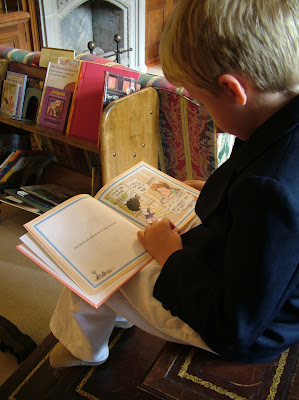 |
| 20 Awesome Ways to Stay in the Creative Flow. © Heather Dakota, LLC. |
Recently, I was asked how I get so much done. Let's look at what it means to be in the creative flow, because that's how you get things done.
Creative flow is a moment in time when you’re both challenged by what you’re doing and have complete freedom in how you complete the creation. You engage when you are completely in the present moment. If you’re not flowing, you aren’t allowing
yourself to be challenged, you’re completely overwhelmed with too much to do or too little time, or someone
else is holding you back. Be really careful with that last one that you aren't projecting some of your fears onto someone else.
There isn't a secret to staying in the creative flow, but here are my go-to practices:
1. Make time for yourself. Creatives are notorious for doing so much that we forget to take time for ourselves, for our dreaming, and for our creating. Get yourself some alone time to be with your thoughts and creations.
2. Spend time with supportive family and friends. There is nothing that will kill your creative flow than surrounding yourself with people who poo-poo what you're trying to accomplish. You are the average of the five people you spend the most time with. Think about that!
3. Practice exquisite self care. This includes physical, emotional, mental, and spiritual self care. Ask yourself what you need. Then know what you need and ask for what you want.
4. Spend time outside in nature. The fresh air will revitalize your cells and open up your brain and get the creative juices flowing again.
5. Go on actual adventures. Adventures are a fabulous way to kickstart the creative flow, especially if you're in a rut or are experiencing a bit of stagnation. If you find your creative juices are sputtering, it might be time for an adventure.
6. Turn off all distractions. This includes the TV, cell phones, computer, ask for support and uninterrupted time from your loved ones. Even little ones understand if you set a timer for them.
7. Do something you've never done before. I call these "Firsts." This can be something you've never eaten to trying a different medium. It doesn't have to be a big deal. You don't have to go skydiving. Sometimes these happen spontaneously, too. Just recognize and acknowledge that it is a "First!"
8. Talk to strangers. Alright. I can't say this is a strong suit of mine. But when I have talked to strangers, the conversations have been enlightening or inspirational in some way. Give it a try...it could be a First, too!
9. Play like a child. Break out the crayons, hoola-hoop, or jacks. A childlike curiosity of the world will help you stay in the creative flow. Children are naturally there all the time!
10. Heartstorm. I would say "brainstorm" here, but often times we are too much in our heads. Drop down into your heart center and open up to feelings. Write down ideas from this open, vulnerable, loving, and sacred space.
11. Ask "What if..." Take an idea to the extreme. What would happen if __________________? (Fill in the blank). You can apply this technique to anything from medium of choice to character development.
12. Create a routine. Be careful here. If your creative flow is stagnating, DO NOT create more routines. If you are feeling overwhelmed or procrastinating, a routine can help lead you back into the creative flow.
13. Dream before you do. Many times we are so busy doing that we forget to dream. Personally, I take at least one day a month to just dream. Many times I combine my dreaming time with self care, adventures, and nature. A single "Dream" journal is a handy thing to have along to capture your dreams in one place, instead of a million post-it notes all over the place.
14. Let go of outcomes. Oh this is a biggie! We're human and have expectations. However the more you can let go of how it will happen, the more you'll be able to stay in the creative flow. This also leaves room for synchronicity to happen and challenges you to let go of the control of everything.
15. Don't suck the joy out of it. This is a note that my friend and a top children's book illustrator and designer,
Nancy Panaccione has taped to her computer. Sometimes we get so caught up in perfectionism and expectations that we suck the joy right out of the creative flow.
16. Give yourself a time limit. If there is some fear around your task, make it a small amount of time, like 5 minutes. Work your way up to 30 minutes to 1 hour as you gain confidence. If you're in the flow, you'll forget about time!
17. Keep going. You know the old joke, "How do you eat an elephant?"...that's right, one bite at a time. The same goes for that creative project, goal, or task that you want to flow.
18. Take a break. This is an exercise in exquisite self care. I get up and stretch every hour, sometimes I even go for a little walk or sit in the sun for 5 minutes. Sometimes all I can manage is a 2-minute deep breathing meditation. Whatever works for you is fine, just take a break.
19. Embrace your Saboteurs. Your Saboteurs are Procrastination, Perfectionism, Overwhelm, Judgment, Rebellion, Fear, and Clutter. Sit them down for a chat and find out why they are showing up.
Look for more information to come on how to embrace your Saboteurs.
20. Practice. You can't master flow if you aren't showing up and giving it a try.
So tell me in the comments below. How do you stay in the creative flow? Did you try any of thesse tips? Did they work? Curious minds want to know.








